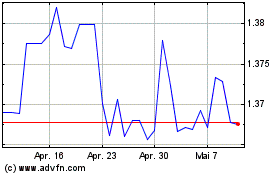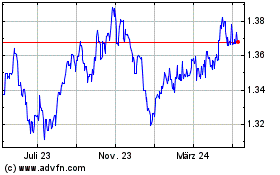Commodity Currencies Slides Amid Risk Aversion
05 August 2024 - 5:57AM
RTTF2
The Commodity currencies such as Australia, the New Zealand and
the Canadian dollars weakened against other major currencies in the
Asian session on Monday amid risk aversion, as traders react to
weak U.S. monthly jobs data and recent weak data on U.S.
manufacturing activity that stocked fears the world's largest
economy could slip into a recession after the U.S. Fed seems to
have waited too long to cut interest rates. Markets in Japan, South
Korea and Taiwan are plunging more than 5 percent.
The unexpected increase in the unemployment rate reached its
highest level since hitting 4.5 percent in October 2021.
Weakness across all sectors led by energy, financial and
technology stocks, also weighed on the investor sentiment.
Crude oil prices fell sharply to a two-month low, sliding for a
second successive session on rising concerns about the outlook for
demand due to slowing growth in the U.S. West Texas Intermediate
Crude oil futures for September fell $2.79 or 3.66 percent at
$73.52 a barrel.
In economic news, data from Judo Bank showed that the services
sector in Australia continued to expand in July, albeit at a slower
pace, with a services PMI score of 50.4. That's down from 51.2 in
June.
Also, data published by S&P Global showed that China's
service sector growth accelerated in July on faster growth in new
business inflows. The Caixin services Purchasing Managers' Index
rose to 52.1 in July from 51.2 in June. The score was expected to
rise to 51.4.
In the Asian trading today, the Australian dollar fell to an
8-month low of 93.89 against the yen and nearly a 9-month low of
1.6841 against the euro, from Friday's closing quotes of 95.38 and
1.6756, respectively. If the aussie extends its downtrend, it is
likely to find support around 92.00 against the yen and 1.69
against the euro.
Against the U.S. and the Canadian dollars, the aussie dropped to
5-day low of 0.6482 and 0.8999 from last week's closing quotes of
0.6509 and 0.9029, respectively. On the downside, 0.63 against the
greenback and 0.88 against the loonie are seen as the next support
levels for the aussie.
The aussie slipped to more than a 1-month low of 1.0903 against
the NZ dollar, from Friday's closing value of 1.0925. The next
possible downside target level for the AUD/NZD pair is seen around
the 1.08 region.
The NZ dollar fell to a 6-day low of 1.8382 against the euro and
a 1-year low of 86.08 against the yen, from Friday's closing quotes
of 1.8312 and 87.29, respectively. If the kiwi extends its
downtrend, it is likely to find support around 1.85 against the
euro and 85.00 against the yen.
Against the U.S. dollar, the kiwi edged down to 0.5938 from
Friday's closing value of 0.5957. The NZD/USD pair is likely to
find its support around the 0.57 region.
The Canadian dollar fell to nearly a 3-1/2-year low of 1.5162
against the euro and an 8-month low of 104.28 against the yen, from
Friday's closing quotes of 1.5134 and 105.62, respectively. If the
loonie extend its downtrend, it is likely to find support around
against 1.52 against the euro and 103.00 against the yen.
Against the U.S. dollar, the loonie edged down to 1.3887 from
Friday's closing value of 1.3872. On the downside, the USD/CAD pair
may find its support around the 1.39 area.
Meanwhile, the safe-haven yen strengthened against its major
rivals in the Asian trading today amid risk aversion.
Data from Jibun Bank showed that the services sector in Japan
bounced back up into expansion territory in July, with a services
PMI score of 53.7. That's up from 49.4 in June.
The yen rose to near 7-month highs of 157.97 against the euro,
144.61 against the U.S. dollar and 185.05 against the pound, from
Friday's closing quotes of 159.88, 146.54 and 187.54, respectively.
If the yen extends its uptrend, it is likely to find resistance
around 156.00 against the euro, 143.00 against the greenback and
186.00 against the pound.
Against the Swiss franc, the yen advanced to a 4-day high of
169.48 from Friday's closing value of 170.81. On the upside, 166.00
is seen as the next resistance level for the yen.
Looking ahead, services PMI data from various European economies
and U.K. for July and Eurozone PPI for June are due to be released
in the European session.
In the New York session, U.S. ISM services PMI data for July and
Canada average hourly wages for July are slated for release.
US Dollar vs CAD (FX:USDCAD)
Forex Chart
Von Dez 2024 bis Jan 2025

US Dollar vs CAD (FX:USDCAD)
Forex Chart
Von Jan 2024 bis Jan 2025
